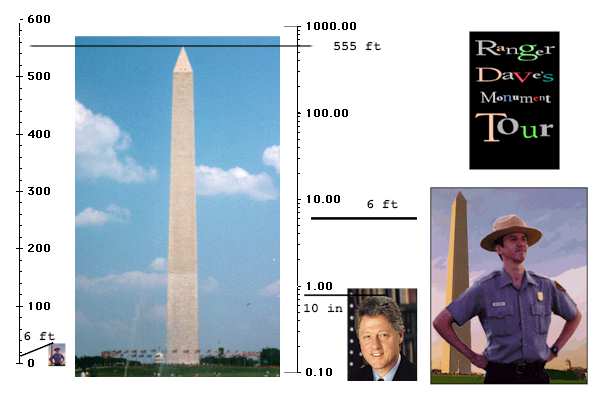Meet President
Clinton, who used to prowl around Washington, D.C., and Ranger Dave, who leads guided tours of the Washington Monument in our Nation's
Capitol.
Obviously, Ranger Dave looks pretty small
standing near the Washington Monument (linear scale at extreme left); on a linear scale
not even President Clinton's head is visible. However, when the three
are compared on the
three-decade logarithmic scale (middle) -- Ranger
Dave, the Washington Monument, and President Clinton's head -- are clearly visible.
This example illustrates the utility of logarithmic scales which are
particularly useful when comparing numbers or values that are disproportionately different in
magnitude. Numerical values are typically converted to their
corresponding logarithmic values in the following situations:
- Functions that range over a broad scale of
magnitudes are usually graphed with a logarithmic axis.
- Calculations involving the multiplication and/or
division of combinations of very large and/or very small numbers are sometimes simpler
with logarithmic algebra.
Many topics encountered in this course are best understood in terms of
logarithmic relationships, such as acid/base titrations, oxygen-binding properties of
hemoglobin, and the kinetics of substrate modification by an enzyme.

